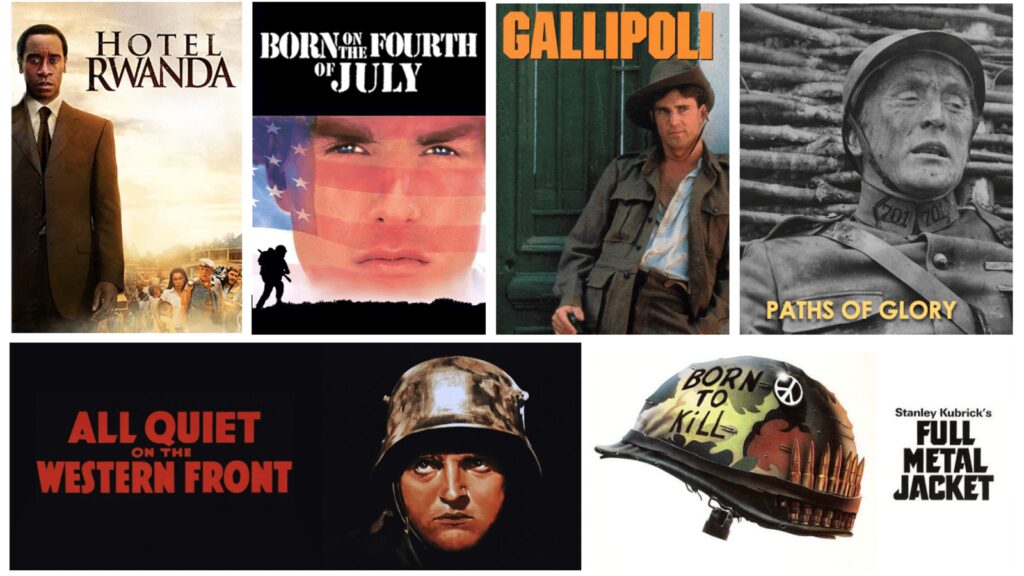War films have been evolving alongside advancements in filmmaking technology, societal changes, and cultural perspectives. In this article, we explore the evolution of war films through the lens of two notable movies, “Apocalypse Now” and “Saving Private Ryan.”
“Apocalypse Now,” directed by Francis Ford Coppola, is set during the Vietnam War and delves deep into the psychological and moral toll of warfare. The film challenges traditional heroic narratives and questions the morality of warfare, reflecting the disillusionment and mistrust of the post-Vietnam War era.
On the other hand, “Saving Private Ryan,” directed by Steven Spielberg, is set during World War II and brings a gritty realism to combat. The film’s depiction of the chaos and brutality of war, particularly in its iconic opening D-Day sequence, immerses audiences in the visceral experience of battle.
Both films have played significant roles in shaping war film tropes and conventions. They highlight the physical and psychological traumas soldiers face, question the morality of war, and emphasize the need for authenticity and realism in depicting combat.
The influence of these films can still be seen today, as war films continue to explore new perspectives, challenge established conventions, and push the boundaries of depicting the realities of war. From the psychological journeys of soldiers in “Apocalypse Now” to the gritty combat sequences of “Saving Private Ryan,” these films have left a lasting impact on the genre and will continue to shape the representation of war in cinema for years to come.
From Apocalypse Now to Saving Private Ryan: Exploring the Evolution of War Films
Introduction
War films have been a prominent genre in the cinematic landscape for over a century, offering audiences a glimpse into the experiences of soldiers on the front lines. These movies have always evolved alongside advancements in filmmaking technology, societal changes, and cultural perspectives. Two notable films that exemplify this evolution are “Apocalypse Now” and “Saving Private Ryan.” This article will explore how these films reflect different eras and ideologies, and how they have contributed to the development of war films as we know them today.
Apocalypse Now: A Journey into Darkness (1979)
“Apocalypse Now,” directed by Francis Ford Coppola, is a classic war film that delves deep into the psychological and moral toll of warfare. The film is set during the Vietnam War and follows Captain Benjamin Willard as he embarks on a mission to assassinate Colonel Kurtz, a renegade army officer.
What sets “Apocalypse Now” apart is its unflinching portrayal of the horrors of war and the impact it has on individuals. The film explores themes of insanity and dehumanization, reflecting the disillusionment and mistrust that pervaded the post-Vietnam War era. The use of hallucinatory visuals, a haunting musical score, and brutal violence all contribute to the nightmarish atmosphere of the film.
“Apocalypse Now” broke new ground in the war film genre by challenging the traditional heroic narratives and questioning the morality of warfare. Its anti-establishment message resonated with audiences and marked a significant shift in the way war films were perceived.
Saving Private Ryan: A Gritty Realism (1998)
Directed by Steven Spielberg, “Saving Private Ryan” is set during World War II and follows a group of American soldiers who are sent on a mission to find and bring back Private James Francis Ryan, whose three brothers have been killed in action.
What distinguishes “Saving Private Ryan” is its groundbreaking portrayal of combat. The film’s opening sequence, famously known as the D-Day invasion scene, is a visceral and harrowing depiction of the chaos and brutality of war. Spielberg used innovative techniques, such as hand-held camera work and desaturated colors, to create a documentary-like feel, immersing the audience in the visceral experience of battle.
“Saving Private Ryan” reflects a renewed interest in honoring and paying tribute to the sacrifices made by soldiers. The film presents war as a necessary evil, highlighting the camaraderie and bravery of soldiers while acknowledging the heavy toll it takes on their lives.
Evolution of War Film Tropes
Both “Apocalypse Now” and “Saving Private Ryan” have played significant roles in shaping the tropes and conventions of war films.
1. Depiction of the Soldier’s Experience: These films highlighted the physical and psychological traumas soldiers face during and after warfare. The gritty realism of “Saving Private Ryan” influenced subsequent war films, emphasizing the need to portray the true horrors of battle.
2. Questioning the Morality of War: “Apocalypse Now” challenged the traditional glorification of war by presenting it as a senseless and destructive endeavor. This theme has carried over into many modern war films, inspiring a more critical examination of military conflicts.
3. The Realities of Combat: Both films depicted combat with an unflinching and graphic approach, showing the chaos, violence, and sacrifices involved. This has influenced subsequent war films to strive for a higher degree of realism, audiences demanding more authenticity than ever before.
Conclusion
The evolution of war films from “Apocalypse Now” to “Saving Private Ryan” exemplifies the ever-changing landscape of cinema and the impact that societal and cultural shifts have on the genre. These films have challenged the traditional narrative structures and forced audiences to confront the brutality and moral ambiguity of warfare.
The influence of these films can still be seen today, as war films continue to explore new perspectives, challenge established conventions, and push the boundaries of what is considered acceptable in depicting the realities of war. From the psychological journeys of soldiers in “Apocalypse Now” to the gritty combat sequences of “Saving Private Ryan,” these films have left a lasting impact on the genre and will continue to shape the representation of war in cinema for years to come.
